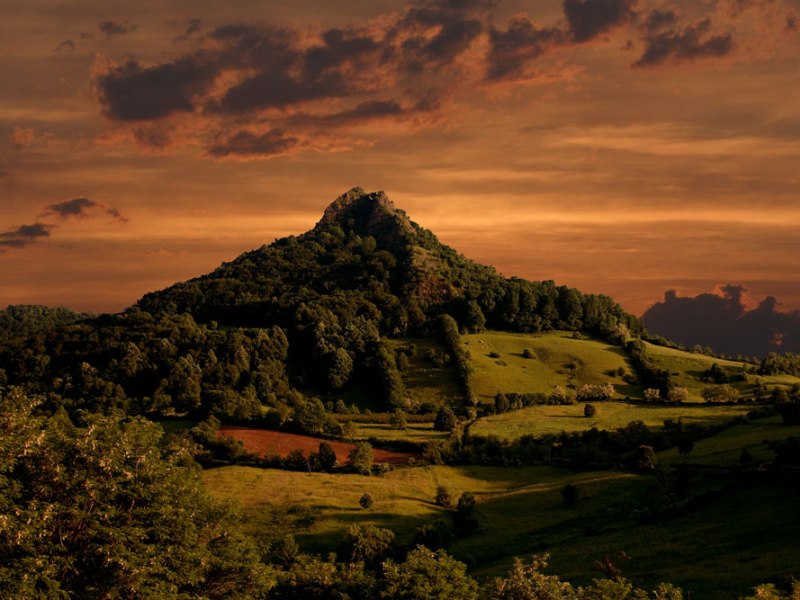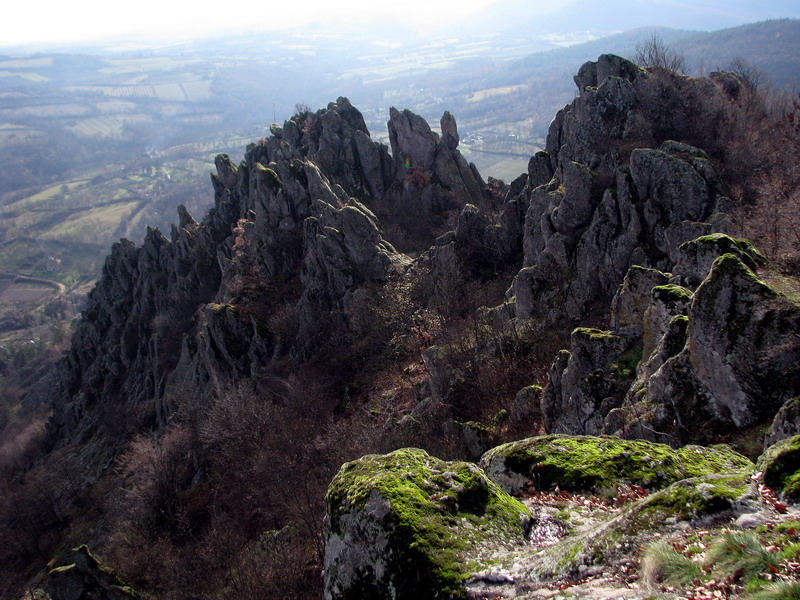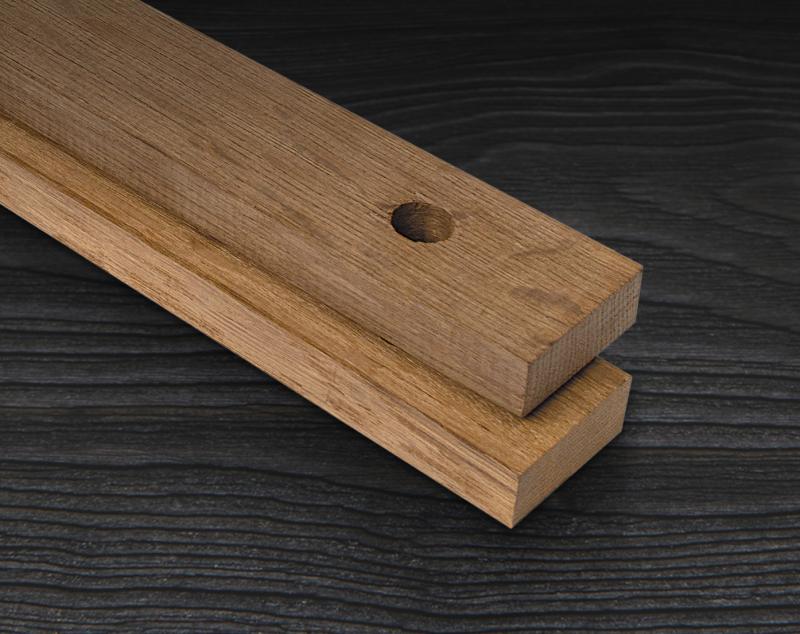News
News / 11/09/2016 / 1877
Year after year, we're understanding better the potential of Serbian vine-growing regions. As we expand our knowledge about wines from Serbian wine regions, we're also laying foundations for better understanding of features that constitute Serbian wine identity.
GLOBAL VOLCANIC ELITE
If you take a look at the geological map of the world, you will notice a number of belts which used to be active volcanically in the past (and some still continue their volcanic activity): Santorini, Sicily, Balaton, Washington State, Soave, Tenerife ... Wines from these regions always spark interest among wine-loving crowd. There is some mystical charm in the idea of sipping wine that originates from soils shaped by volcanoes (lava and ash) and that volcano's features are reflected in the wine.
Is there a wine region in Serbia that deserves a place in this volcanic elite in the future? Which wine region of Serbia has the potential to produce volcanic wine? The answer is affirmative. Šumadija region (central Serbia) is quite unique in Serbia, but this aspect of its identity hasn't been scrutinized so far when dealing with Šumadija wines. ...
FIRE BELT OF ŠUMADIJA
From today's perspective, it may seem incredible, but long ago Serbia was exposed to volcanic eruptions that shaped to a large extent the relief and soil composition of certain regions. Serbian scientist Jovan Cvijić also wrote about volcanogenic relief forms in Serbia. Science confirms that the strongest periods of volcanic activity in Serbia occurred during the late Paleozoic (300 million years ago), Jurassic (150 million years ago), Upper Cretaceous (90 million years ago) and the Tertiary (65 million years ago).
If we talk about the volcanic past of Šumadija, then we must focus on the Tertiary. After a lull at the beginning of the Tertiary, Serbia once again entered a phase of intense volcanic activity some 40 million years ago. Then the Mesozoic Ocean disappeared and the formation of the Dinaric Alps commenced instead. Mountains buckle and fold whilst thick layers of lithosphere are formed, which results in gravitational instability in the wider area surrounding the Dinarides. Such gravitational instability leads to crevices and deep cracks that trigger directly magmatic activity. This explains why Šumadija entered a period of volcanic activity during the Tertiary.
The largest Tertiary volcanic regions in Serbia are Rudnik-Borač-Kotlenik (present day Šumadija), Kopaonik and Golija, Radan (Lece) and Surdulica. Obviously, Šumadija is the only vine-growing region in this group. Volcanism that occurred during the Tertiary period was very diverse. There were almost all known volcanological processes. In some places, relatively quiet, liquid streams of basalt lava flowed; in some areas, thick mass of acidic lava swelled and formed volcanic cone and necks, eg. Ostrvica near Rudnik, Trijeska near Gornji Milanovac, Borački krš. Explosive activity took a variety of types, ranging from short basaltic eruptions (for example in the village of Družetići near Čačak) to violent eruptions of lava rich in silica and water vapor. During the Tertiary, destructive eruptions in Šumadija were frequent and they were followed by mushroom-shaped eruption columns as if they had been nuclear explosions. Some eruptive phases in Rudnik equal in intensity the most powerful volcanic eruptions that history has recorded. Huge amounts of lava spilled in the form of loose pyroclastics, partially emptied lava reservoirs in the shallow deposit holes of the Earth's crust. This often led to soil settling and formation of circular depressions called "calderas". Well-preserved calderas in Šumadija are found in the region of Rudnik-Borač-Kotlenik belt.
We should bear in mind that volcanic activity in Šumadija was not limited only to the Tertiary. Nowadays, the remains of volcanic rocks from the Jurassic period are found as well in the area between Kragujevac and Rekovac.

WHAT DOES IT MEAN?
This volcanic activity in Šumadija had the following consequences:
a) Hilly layout of Šumadija because the relief of the entire region shaped by volcanic activity was left to degradation under the influence of wind, water, humans, etc. Owing to such hilly landscape, Šumadija cannot boast with large river streams other than those located on the external edge of the region.
b) Great diversity of soil types because various soil layers got mixed owing to seismic earthquakes and volcanic activity and then left to further degradation / erosion and creation of Tertiary sediments. Afterwards, over time, layers of vertisol and cambisol were formed on basic and neutral volcanic soils. Microlocation is of utmost importance in Šumadija owing to the fact that soil layers are mixed. It may often occur that two adjacent plots have a completely different soil profile. In addition to soil composition, such plots have different permeability, heat, solubility of minerals. The greatest diversity of soil types in Šumadija is found in the vicinity of Kragujevac.
For comparison, we can consider Badacsony region on the northern shore of Lake Balaton in Hungary, which also had a dynamic volcanic activity in the Tertiary period and nowadays the character of wines originating from this region is defined by distinct minerality in wines produced from grapes found in vineyards located on eroded volcanic rocks.

IN VINO VERITAS ... ET MINERALIS
Volcanic wines are most often associated with minerality. Wine experts still haven't agreed what minerality in wine is and where it comes from, but there is no doubt that wines from volcanic regions possess it. It would therefore be logical to expect that wines from Šumadija, particularly from vineyards in the vicinity of Kragujevac and Topola bring wine's minerality forward.
Wine minerality as distinctive feature of wine can be detected more easily in white wines because wine's minerality can be often disguised owing to anthropogenic impacts, both in the vineyard and in the cellar. Excessive use of wood, accentuated fruitiness as a result of late harvest, high alcohol, content of polyphenols, tannins in red wine are just some of the factors that can mask or completely alter mineral traces in wine.
I had an opportunity to taste wines from Šumadija wineries in order to gain a clear picture of the character of these wines and how they reflect volcanic history of the region. Since I have had limited time for the tasting, I focused on white wines of Šumadija. The result was surprising.
Some wines clearly highlight minerality which complements fruity character, for example Trijumf 2015 - Aleksandrović, 70/30 wine (a blend of Sauvignon Blanc-Semillon) 2015 and 100 Jazz Traminer 2015 from Delena Winery, Chardonnay 2015 and Sauvignon Blanc 2015 from Kraljevska vinarija (the Royal winery), Morava 2015 from Despotika Winery.
Some wines hide delicate mineral trace under layers of fruitiness, for example. Chardonnay 2015 and Sauvignon Blanc 2015 from Arsenijević Winery, Chardonnay 2015 and Sauvignon Blanc 2015 from Stari Hrast winery, Tangenta 2015 from Wine Art winery.
The third group contains wines where minerality doesn't show up, so these are wines with purely fruity character, for example Chardonnay 2015 from Rogan winery, Chardonnay 2015 from Radovanović Winery, Beskraj Sauvignon Blanc 2015 from Despotika winery.
In general, minerality is found to a greater or lesser extent in approximately 60-70% of the wines we tasted.
INSTEAD OF CONCLUSION
It's the year 2022. Number of wineries from Šumadija continues to grow. Wine map of Šumadija contains detailed outline and position of micro-locations where vineyards feature volcanic soils. Oenologists are trying to preserve volcanic character of wines from these plots as much as possible and to avoid modifying it or hiding. Wines of Šumadija have found their place alongside volcanic wines from other well-known regions.
Optimistic view of the future but built on realistic foundations. Šumadija's volcanic soil is already there in some vineyards. The question is what we make of it.

Tomislav Ivanović
Awarded wine writer, wine critic and contributor to selected wine magazines. WSET3-certified author and editor-in-chief of www.vinopedia.rs. Member of Vojvodina Sommelier Association. Juror in national and international wine competitions. Lecturing about wines of Serbia and the Balkans. Local partner of Wine Mosaic organization. Co-founder of International Prokupac Day.

Pročitajte i druge članke iz ove rubrike:


GIUAANI - VINSKI TURIZAM NA GRUZIJSKI NAČIN
PROČITAJ VIŠE


SPASIMO STARE VINOGRADE SRBIJE
PROČITAJ VIŠE


NAŠLI SMO ANTIGONU IZ ORAHOVCA
PROČITAJ VIŠE


SRPSKO VINO KOŠTA 100 EUR - I ŠTA ĆEMO SAD?
PROČITAJ VIŠE


MOŽE LI VINO BEZ BURETA? IMA LI ALTERNATIVE?
PROČITAJ VIŠE
Winner MILLESIMA BLOG AWARD 2016

Pobednik MILLESIMA BLOG AWARD 2016
VINO & FINO wine personality of the year 2016

VINO & FINO vinska ličnost godine 2016